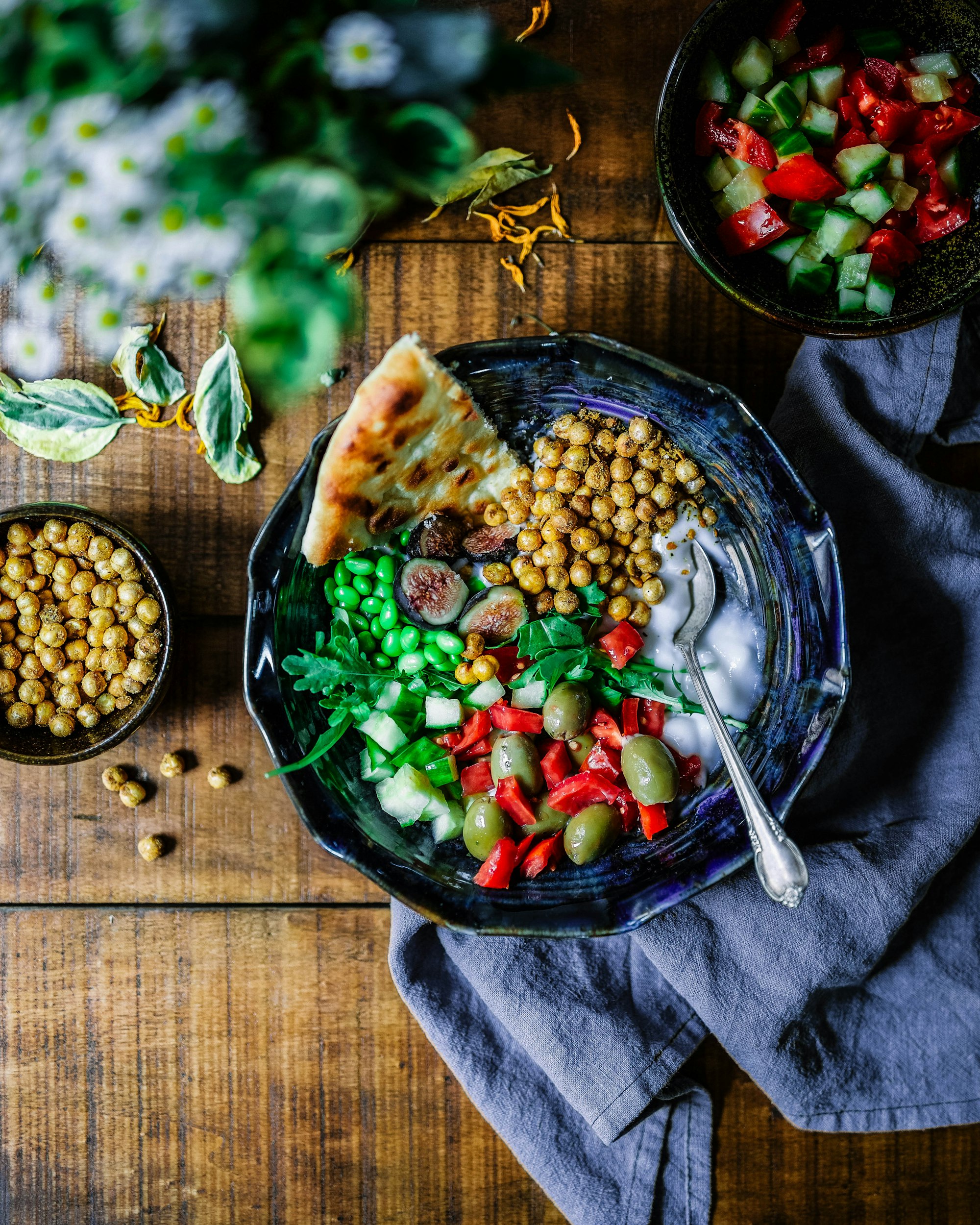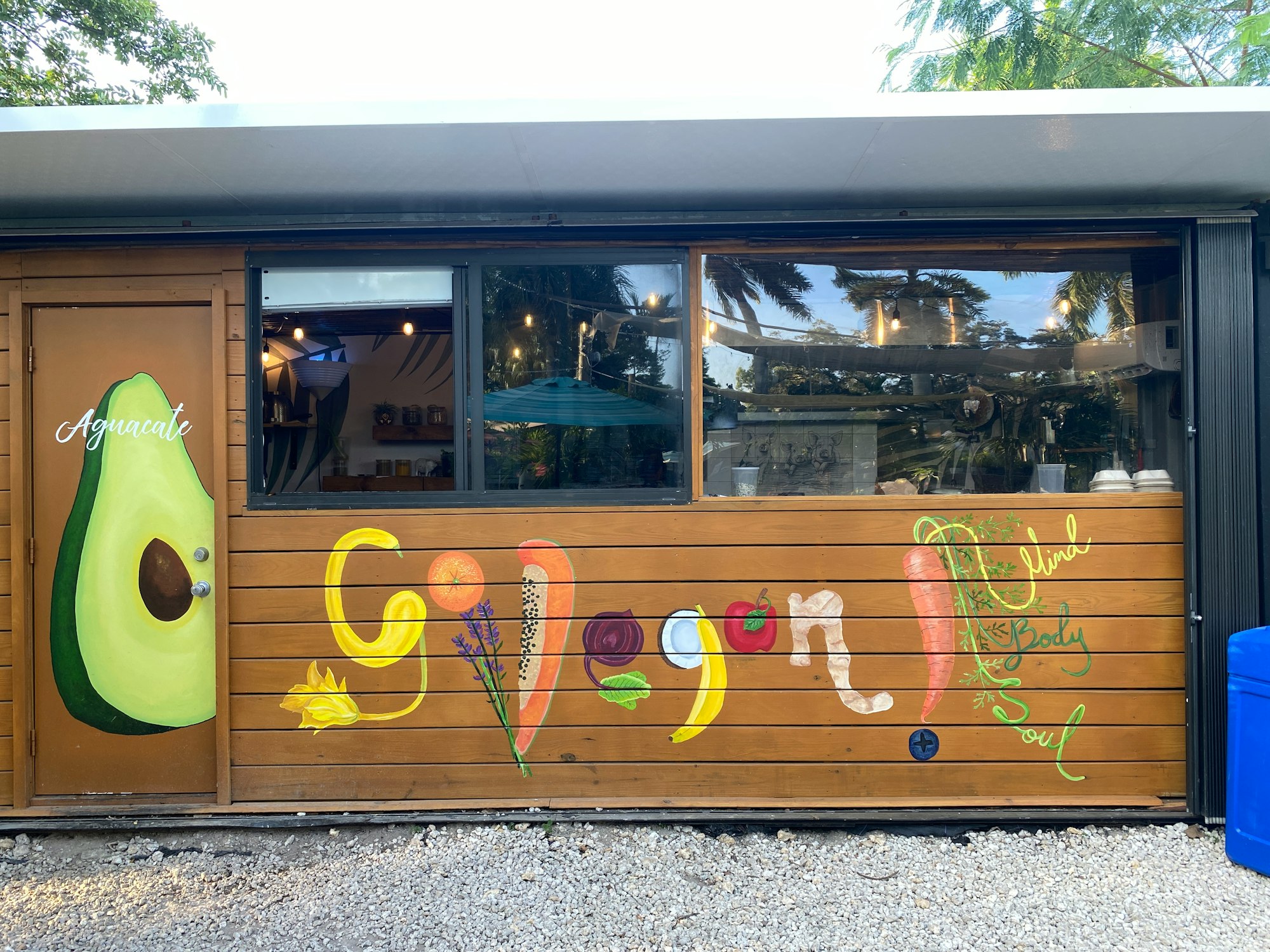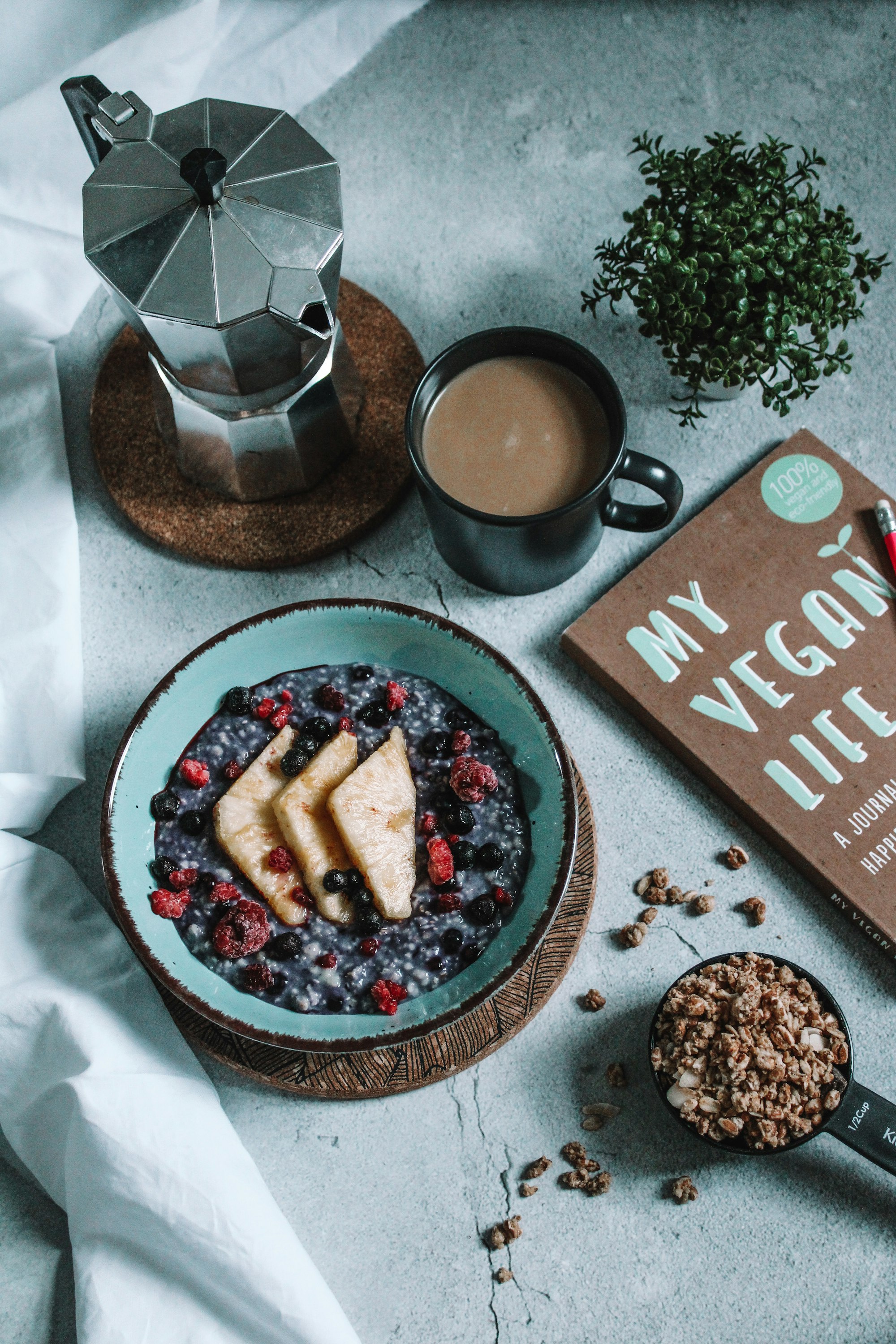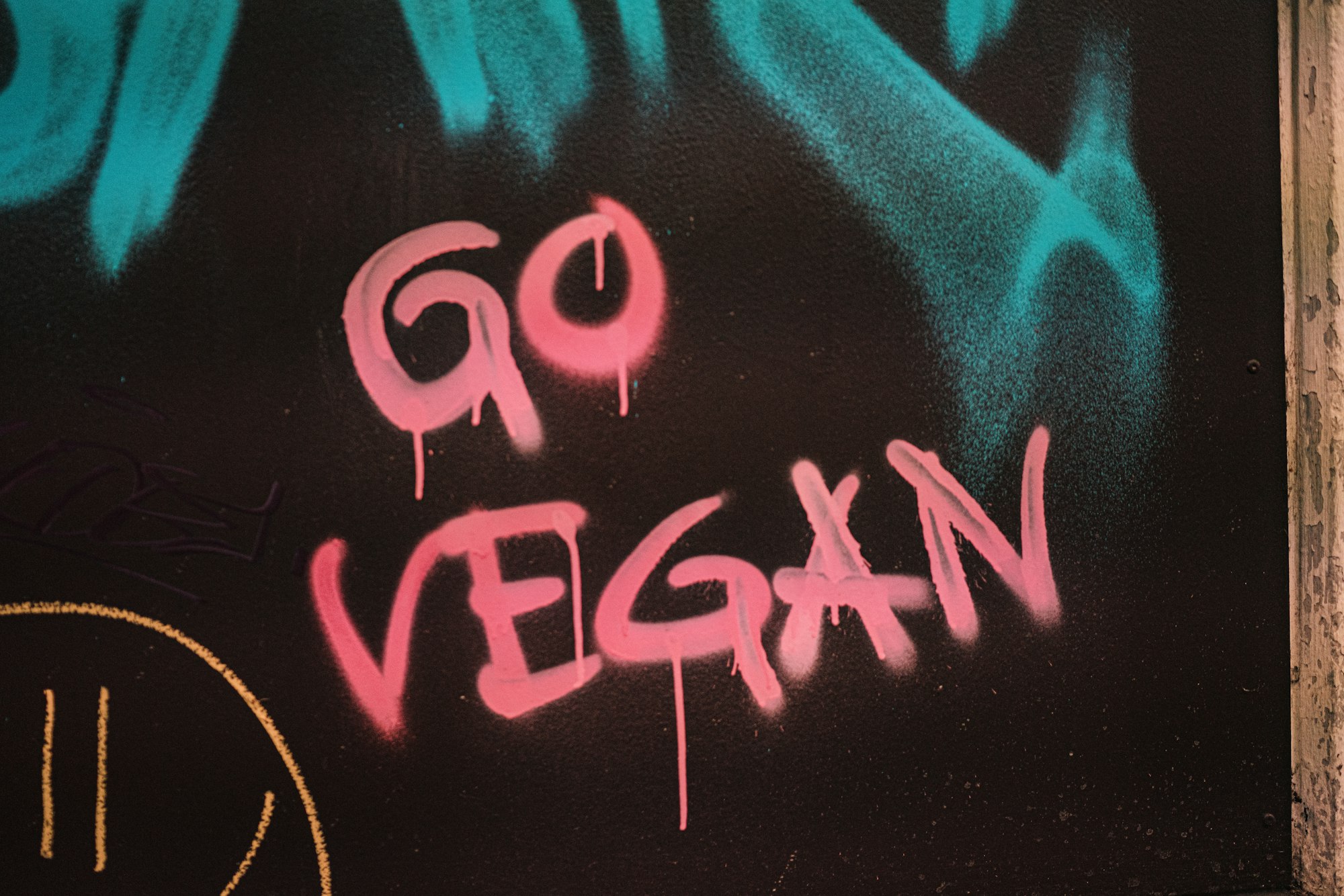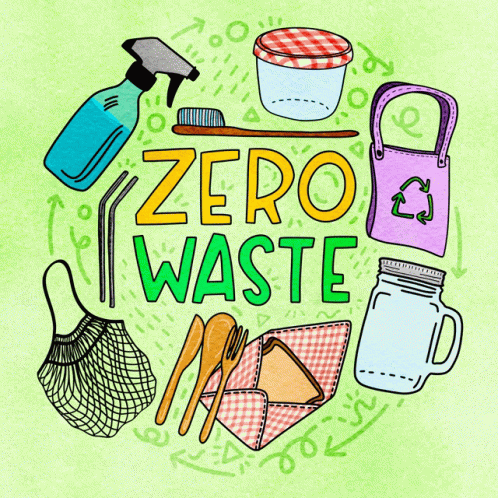
Why This Matters to Me
I learned about zero waste when my sister-in-law started going zero waste a few years back.
Although she is no longer zero waste, she strives to reduce her waste, from composting to using reusable snack bags.
Discover the meaning and principles of zero waste, and then delve into 12 straightforward and practical tips to cut down on food waste, even if you're not ready to go fully zero waste.
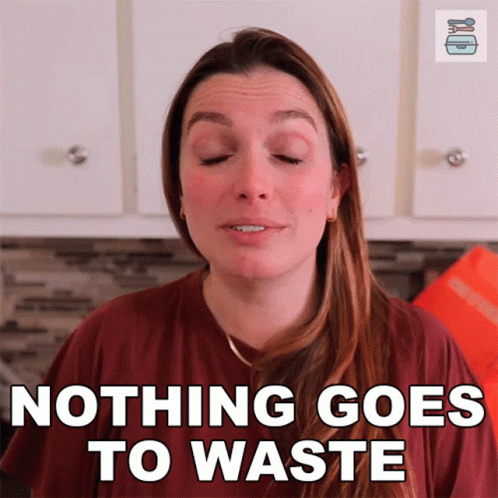
Zero Waste Made Simple
In short, people who go zero waste strive not to waste anything, eliminating their carbon footprint as much as possible.
In other words, it is a more extreme version of the 3 R's that you might have already heard of: 1) reduce, 2) reuse, and 3) recycle. Thanks to Bea Johnson, the author of the 2013 book Zero Waste Home, we can add two more words to this lifestyle: 4) refuse and 5) rot.

1. Refuse what you don't need
In other words, you can avoid purchases that harm the environment. Many items are used once and then thrown into landfills.
The following are ten examples of everyday items that land in the landfill:
- Party balloons
- Straws
- Plastic bags
- Paper towels
- Pop (soda) cans
- Wrapping paper
- Magazines
- Plastic water bottles
- Disposable diapers
- Paper cups
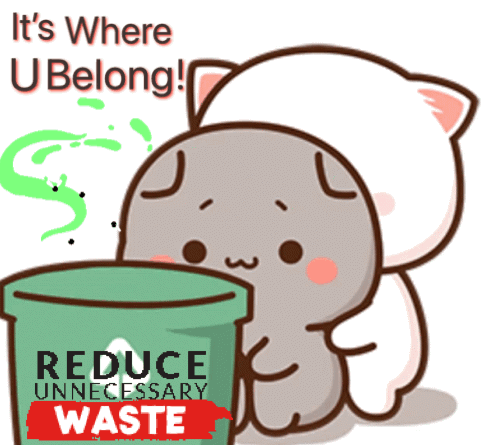
2. Reduce what you need
Some things get wasted because of excess.
For example, you might buy extra Christmas lights if there is a sale. When it is time to use the spare lights, they do not work because they have been stored too long and end up in landfills.
Try your best to buy what you need and purchase more as needed. For instance, get the amount of food, decorations, etc., you need rather than buying more. That will save you time and decrease the amount of items you throw away.
Thankfully, the landscape of sustainability is constantly evolving, with many innovative businesses paving the way for a more sustainable future. These businesses have done the hard work for us, providing alternatives to commonly discarded items that are both eco-friendly and practical.
Here are ten eco-friendly alternatives to the commonly discarded items:
- Latex balloons → Inflatable balloons
- Paper straws → Stainless steel straws
- Plastic bags → Grocery tote bags
- Paper towels → Cotton flannel unpaper towels
- Soda (pop) cans → Soda machine
- Wrapping paper → Decorative gift boxes
- Paper magazines → Digital magazine subscriptions
- Plastic water bottles → Reusable water bottles
- Disposable diapers → Cloth diapers
- Paper cups → Plastic cups
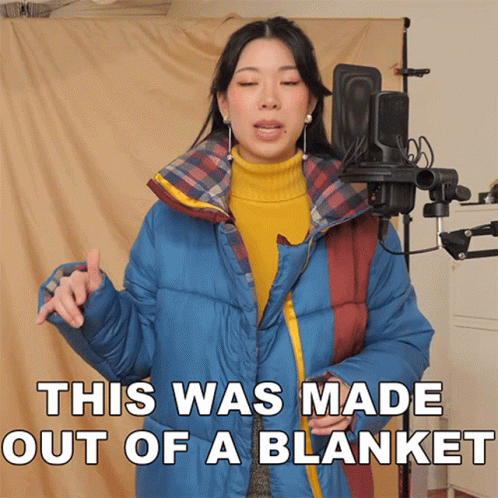
3. Reuse when you can
After buying or acquiring things, reuse them as much as possible. This will save you money and reduce your waste.
Here are some ways to reuse what you have:
- Inflatable balloons can be used at several birthday parties instead of buying new latex balloons for each party.
- Stainless steel straws can be used again after they are washed.
- You can bring grocery tote bags to the store repeatedly.
- Cotton flannel unpaper towels can be reused after washing and drying.
- With a soda machine, you can make pop at home as much as you want.
- Your gift recipient can use the decorative gift box to give someone else a present, or you can reuse it if they do not want it.
- You can read a digital magazine as much as you want. Paper magazines can be kept on your bookshelf for future reference.
- Use a reusable water bottle repeatedly. I like reusing plastic water bottles when traveling to prevent myself from losing my expensive water bottles on a trip.
- Wash and dry cloth diapers before using them again.
- Plastic cups can be used again after they are cleaned in the dishwasher.
Another form of reusing items is repurposing them, such as using things for other purposes, like how the person in the GIF above made their coat out of a blanket.
Here are some ways you can repurpose these commonly discarded items:
- Leftover latex balloons can be made into ice packs, stress balls, and dog shoes. Foil balloons can be turned into pompoms, put in a scrapbook, and made into a foil blanket for your car's first aid kit.
- If you have unused paper straws, use them in your next art project to make coasters, bracelets, picture frames, and more.
- I repurpose plastic grocery bags to collect trash in smaller garbage cans, like in my bathroom. It is more economical than buying tiny trash bags. If you would rather be more creative, you can turn grocery bags into rugs, rope, and wreaths.
- Cotton flannel unpaper towels and old clothes and towels can be repurposed as dust rags. Other ideas include but are not limited to quilts, pillow covers, and headbands. Paper towels cannot be reused or recycled but can go in the compost.
- Pop cans can be transformed into holiday ornaments, jewelry, and pen holders.
- Wrapping paper can be used in origami, textbook covers, and birthday party hats.
- Use paper magazines in collages, paper mache, and wrapping paper.
- Some inventive ways to repurpose plastic water bottles include bird feeders, sprinklers, and vases.
- You can repurpose disposable diapers such as paper towels, deodorant wipes, and ice packs.
- Paper cups can become small planters, crafts for kids and adults, and pencil holders.
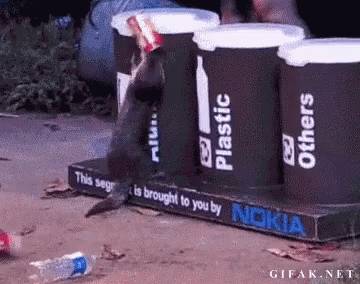
4. Recycle when you can't reuse
After determining that you cannot reuse something, try to recycle what you can.
It's crucial to be well-informed about what can and cannot be recycled in your area. Check with your local recycling program to determine what is acceptable and unacceptable to recycle. Every location has its own recycling guidelines, so doing your research can prevent fines and ensure that you're recycling effectively.
Here is what can and cannot be recycled from the previously mentioned examples:
- No, latex balloons are not recyclable. It would be best not to buy them, but if you must, find a way to repurpose them instead of discarding them.
- Some paper straws can't be recycled; some can go in the compost.
- Yes, drop off plastic bags at the nearest plastic bag drop-off. (My closest options are Hy-Vee and Kohl's.) Then, they are repurposed into composite deck boards.
- No, paper towels are not recyclable but are compostable.
- Some places have redemption centers where you can drop off your pop cans and bottles and earn money. From my experience, redeeming a few garbage bags full of pop bottles and cans takes hours, so bring something to do or do some errands while they redeem your items. If you do not have any redemption centers, they can be recycled with the aluminum or metal recycling bin.
- Regular and glossy wrapping paper (paper and kraft) can be recycled if nothing is on it. Avoid buying frilly wrapping paper with glitter, metallic flakes, and foil, as these end up in landfills.
- Yes, most recycling programs recycle paper magazines. If you want to give them a new life, donate them to your local library so others can read them. After they are outdated, the library can use them in its art classes.
- Yes, most plastic water bottles can be recycled. Please check the label before doing so.
- No, disposable diapers are not recyclable or compostable but can be donated. Check if your family members or friends with infants would like them. If not, donate them to the local pregnancy center or women's and children's shelter.
- No, paper cups are not recyclable. Fortunately, most coffee shops allow you to fill your thermos if it is clean. Some places, like amusement parks, offer refillable mugs for soft drinks. Even though they cost more initially, many locations offer discounts for using a reusable mug after the first purchase because it reduces their supply costs.

5. Rot the rest
After all else fails, see if you can put the rest of your waste in the compost bin. One positive thing about living in the country is that I can put my food scraps in the field instead of composting them.
Most nonfood items are not biodegradable and cannot be thrown in the compost bin. Before you can go ahead and dispense anything new, please check your local compost facility's guidelines.
Before my dad switched careers as a stay-at-home dad and crop farmer, he was an agricultural engineer. One of his responsibilities was doing compost presentations. Even with a compost expert, we never had any luck making compost while growing up, so my parents, to this day, throw plant-based food scraps in the field behind their house.
Making compost at home is tough. I highly encourage you to take advantage of your local compost facility. If there is not one near you and you want to make it yourself, plenty of experts online can tell you more about it.
Here is what we are able and unable to compost out of our original list of everyday items that commonly end up in landfills:
- No, latex balloons can't go in the compost. Please find a way to repurpose balloons rather than discard them.
- Some paper straws can go in the compost bin. The easiest way to tell is if the straw is shiny, it cannot be composted because it is not biodegradable. On the other hand, if the straw is dull (not glossy or decorative), there is a good chance it is compostable, but check the label before doing so.
- No, plastic bags cannot rot but can be recycled.
- Yes, paper towels can go in compost bins.
- Pop cans are not biodegradable but can be recycled or repurposed.
- If the wrapping paper meets the recycling criteria, it can be put in the compost bin. If not, find a way to repurpose it.
- No, paper magazines are usually not compostable, but they can easily be recycled.
- No, plastic water bottles are prohibited in compost bins but permitted at most recycling centers.
- No, disposable diapers are not compostable but can be donated or repurposed if unused.
- Some paper cups are compostable; others are not. Please check the label before doing so.
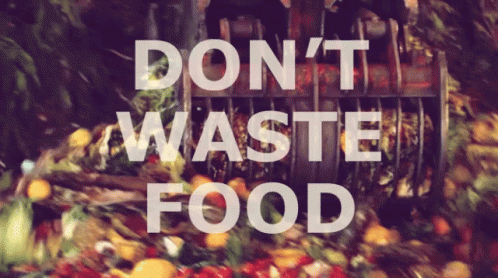
Alternatives to Going Zero Waste: 12 Practical Steps You Can Take
In short, the zero-waste movement promotes a lack of waste with five different methods to eliminate waste:
- Refuse what you don't need.
- Reduce what you need.
- Reuse when you can.
- Recycle when you can't reuse.
- Rot the rest.
These are significant steps to reduce waste. However, this movement is not achievable for everyone, but one thing that everyone without food insecurities can control is their food waste. In other words, what steps can we take to reduce our food waste?
Here are 12 practical steps that you can take to reduce your food waste.
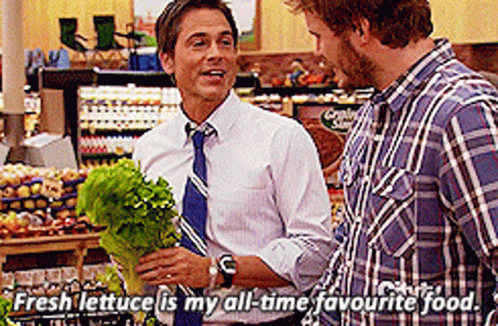
1. Buy less fresh produce
Many people, including myself, buy too much fresh produce, some of which is wasted because it spoils before we can eat it.
For example, I sometimes buy leafy greens and later throw them away because I do not immediately make them into a salad.
If you don't buy fresh produce with a purpose, you are much more likely to waste it, such as for a particular recipe or snack.
When in doubt, buy canned or frozen fruits and vegetables because they last a couple of years instead of a week or two.
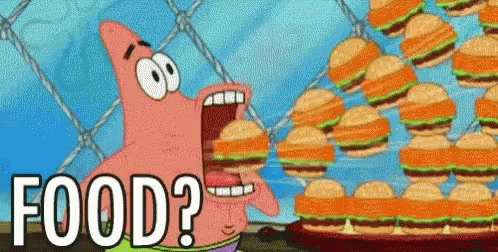
2. Buy in bulk
In addition to food, we must be conscious of how many food wrappers we discard. It is surprising how full a trash bin can get during meal prep because of food packaging.
Here are a couple of bulk food options:
- Bulk Food: When you hear someone buying food in bulk, one meaning is that they purchase the items in larger quantities at once. For example, they may go to Sam's Club or Costco and buy a five-pound bag of mixed fruit instead of a one-pound bag. While this takes up more freezer space in the short term, you tend to save more money per pound in the long term.
- Bulk Section or Store: When you hear about how eco-friendly bulk sections or stores are, they talk about a place with a bunch of containers with pantry items from whole grains to dried beans to granola. You can bring a Mason jar and fill it as much as you want, get it weighed, and finally pay on your way out. The best part is that no food wrappers or packaging are required, and you can take as much or as little of one product as you want.

3. Make a grocery list
The most productive shoppers have a plan before shopping, specifically a grocery list, to keep their purchases to a minimum. I'm not just saying that because I am an INTJ. Instead, it has been proven to reduce spending in the store, save time, and reduce extra purchases, ultimately reducing food waste.
I admit that my meal-prep routine is a bit lengthy. One of my brothers said he could get in and out of the store faster than I could write up my grocery list. He's right because I tend to spend over half an hour making my list. After deciding on recipes, I check my kitchen to see what I have and need.
Whether you believe in lists or spontaneously go grocery shopping, ask yourself if a list would improve your shopping habits. If so, I encourage you to create one. Your wallet and trash can will thank you later.
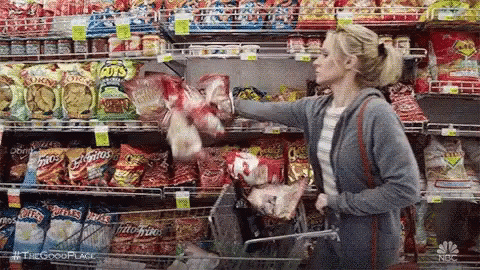
4. Eat before your grocery run
Have you ever gone to the supermarket for a couple of things and ended up with a full cart because you found some tasty food along the way?
That is called impulse buying. For example, you can't often check out without seeing a decent amount of candy and snacks by the cash register. They are there on purpose to convince shoppers to buy more.
One way to combat impulse buying is to eat before you go shopping. Even if you have a snack before you leave, your hunger will not dictate your thoughts as you shop.
Another suggestion is to buy groceries online via the store's app or website. If you're terrible at impulse buying, you will be less tempted to purchase extra items because the food isn't staring at you in the store.
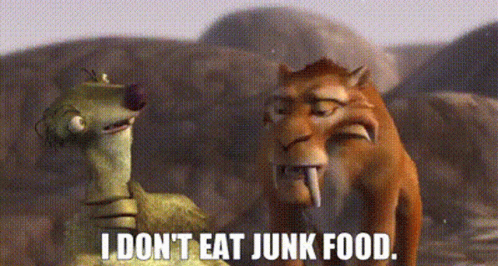
5. Skip the junk food
What do most processed foods have in common? Usually, they have some sort of packaging around the food. Where does the packaging go afterwards? It normally ends up in the landfill. In my case, my dad burns my garbage, but I always have to clean up the ditch by my house, in addition to my parents', because people throw fast food litter and beer cans in them.
Junk food should be a treat, not something we eat all the time. Our health and wallet will be grateful later.
Plus, most of the servings are way too big for one sitting. It is a catch-22 because lots of junk food (French fries, tater tots, donuts, etc.) go bad quickly if you don't eat them right away, but your health tends to suffer if you eat it all at once, instead of in moderation.
In short, if you crave something salty or sweet, make it at home, instead of buying it. It would be even better if you shared the food with your family and friends. Then, you can have a taste of junk food without wasting it or eating too much.
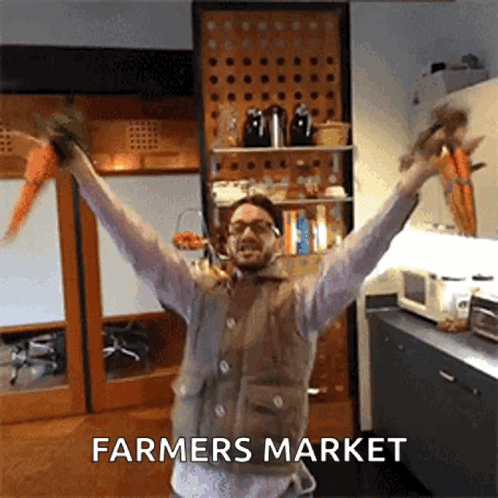
6. Support farmers' market
In case you are unfamiliar, a farmers' market is an opportunity to support local produce farmers and other businesses by buying products from them, instead of your preferred supermarket.
There are dozens of farmers' markets near me during produce season. I recommend checking out websites like Local Harvest to see where the local farmers' markets are nearest you.
One of my favorite opportunites to get fresh produce in the area is the Amish auction. Instead of having each vendor selling at a stand, one auctioneer gives each produce item and plant to the highest bidder. Note, most of the items come in bulk unless specified, but there is always at least two tables full of smaller batches of produce for those who prefer to come to the auction for fun and are going to eat the food right away.
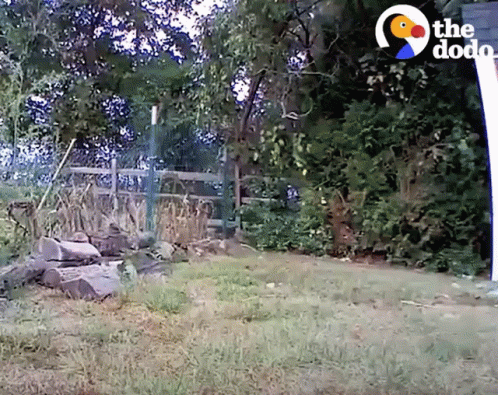
7. Garden
My favorite things about gardening is you don't have to pick everything at once. One exception is strawberries. If they look good, pick them right away before the bugs and outdoor critters eat them.
Plus, you can stagger when you plant some of the same type of the plant, so the produce has a longer season, like planting some in the beginning, middle, and end of the recommended planting time.
This is what my garden has looked like the past couple of years. It has been a lost cause to grow annual plants in a garden. My biggest culprit is the woodchucks (groundhogs) that tear most of my plants out of the ground and eat them. One time, I went inside for lunch in the middle of planting a section of the garden, and when I came back, all of the plants were out of the ground and some were eaten.
Hopefully, you have more luck than me and can see your garden survive more than 24 hours.
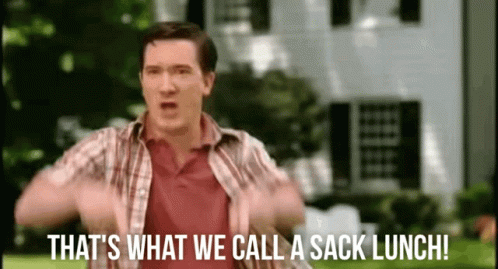
8. Make sack lunches
Even though I always got regular lunch at school, I almost never ate at the college cafeterias because a) I lived with my parents and b) I made sack lunches every morning. The only exceptions were the week of marching band camp and when I ate out after forensic speech practice with my teammates for comradery.
After I graduated from college, I continued to bring sack lunches to work. I liked it because I got to eat whatever I wanted on a budget. Plus, I always liked eating my food because I felt better afterwards.
Sack lunches are great because they save you money and give you more reasons to eat your leftovers. Hopefully, you will not have any meals to spare before the next meal prep session, but you definitely won't have as many when you bring five of those servings for your work lunch over eating out.
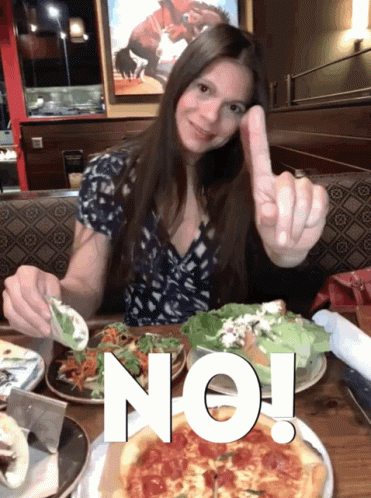
9. Don't eat out
I almost never eat out unless someone else is paying, usually my parents. We tend to go out to eat to celebrate someone's birthday or to spend time with my other relatives.
Many restaurants have a lot of food waste, but we have control to lessen the waste.
- Buffets: One huge contributer to food waste at buffets, like Pizza Ranch, Golden Corral, and HuHot Mongolian Grill, is taking too much food and wasting it because we usually are not allowed to bring the leftovers with us. If you are the rare person who does not eat enough at a buffet, you are welcome to eat more at home. It is better to eat slowly and put less on each plate. Then, you have a better time determining if you are full or not.
- Sit-Down Restaurants: The main culprit to food waste at sit-down restaurants, like Olive Garden, IHOP, and The Cheesecake Factory, is the meal portion. The regular meal portion size is way too big to eat in one sitting. I tend to eat it all in one sitting, but no one should. A couple of alternatives are ask for the lunch portion or request for something off of the kid's menu. If you prefer to get the regular meal size, put half of it in a to-go container and have the rest for your next meal.
- Eat at Home: Veganism has ruined the experience of eating out. I believe that a frozen dish like pizza or a TV dinner tastes way better than going out. The portions are smaller. Plus, I do not have deal with the awkward interactions between me and the server waiting on me. In addition, you are wasting less time commuting to and from the restaurant, less money on the alternative over eating out, and less food by making it the meal to your preferred serving size, depending on the size of your household.
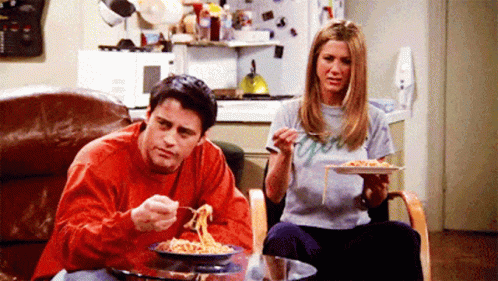
10. Make food you like
When in doubt, make food you like because you are less likely to discard it because you are confident that you like it and you will eat it again.
I have a tendency to try new recipes at least once a month. I do not regret this experimentation because I've learned that I like foods that I never tried growing up, like beets. The flaw with this is the food is more likely to get thrown away than eaten because if you don't like it, many tend to throw food away, instead of suffering through the leftovers.
I made a list of recipes that I like on my Notes app on my phone with the link to each recipe I've tried and liked. I make sure I put at least two of those recipes on my meal prep list every week. Feel free to give this a try yourself.

11. Meal prep with less
Trick question, how do you make the same amount of food as usual with fewer ingredients? The trick is you waste less food in the process.
For example, you pick a common theme for your recipes. That way, you can use the same ingredients for multiple recipes.
If I picked Mexican dishes, I would be able to pick up a five-pound bag of sweet potatoes. Instead of having leftover sweet potatoes for later, I can make some of the sweet potatoes into sweet potato cubes for rice bowls, make others into Mexican-style roasted sweet potatoes, and then use the rest in sweet potato black bean enchiladas.
In short, you may have to get more creative with your recipes, but it is better to use up a bag of produce right away to prevent food waste.
This example was personal because I tend to forget about potatoes and sweet potatoes, so I waste less when I buy the amount needed for meal prep or figuring out recipes to use them all up within a couple of weeks of buying them.
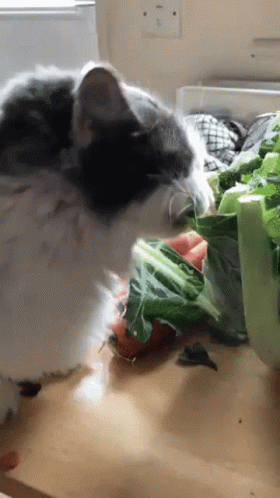
12. Go vegan
A vegan diet is one of the most environmentally friendly because it has the lowest carbon footprint. That is because diets that contain meat have a worse impact on the environment.
Here are a few indisputable environmental benefits of a vegan diet:
- Fewer greenhouse gases
- Less water and land needed
- Reduced pollution
- More species saved from deforestation
Granted, just because veganism is a 100% plant-based diet, that does not mean it is the healthiest diet in existence. For example, a Mediterranean diet is way better than being a junk food vegan. Instead, a healthy vegan lifestyle is more nutritious than the Standard American Diet.
I went vegan overnight, but that is not practical for most people. Here are some steps you can take to reduce your carbon footprint and live a more plant-based lifestyle:
- Participate in Meatless Mondays, as in take meat out of your diet every Monday.
- Become a flexitarian. That means you would reduce your meat intake more than one day a week but not completely eliminate it.
- Go vegetarian. Vegetarians don’t eat meat.
- Ease into veganism by becoming a chegan, aka a cheating vegan.
- Dedicate certain days of the week to being entirely plant-based, like eating 100% plant-based during the work week and a chegan on the weekend.
- Eat 100% vegan.
- Buy cruelty-free household items. That means these items do not undergo animal testing.
- After you get used to finding the cruelty-free bunny logos, start buying vegan-friendly alternatives, when you buy new stuff.
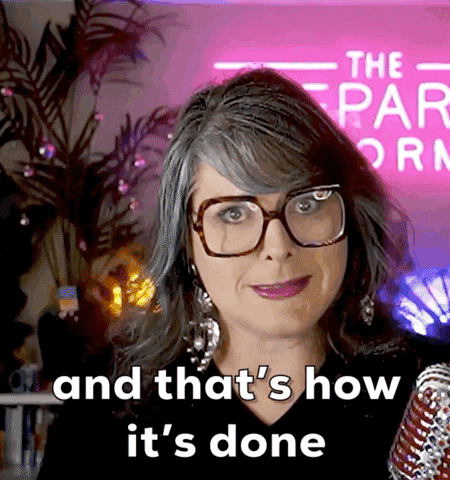
A Final Thought on Zero Waste
I am so happy that I rediscovered this blog post in my draft folder, especially since one of my New Year's resolutions is to buy fresh produce with a purpose to reduce my food waste.
Zero waste is a great goal, but it is not feasible for everyone, especially for small-town folks, people living in colder climates, and individuals and families on food stamps. Luckily, we can take these practical steps to reduce our food waste:
- Buy less fresh produce.
- Buy in bulk.
- Make a grocery list.
- Eat before your grocery run.
- Skip the junk food.
- Support farmers' market.
- Garden.
- Make sack lunches.
- Don't eat out.
- Make food you like.
- Meal prep with less.
- Go vegan.
I wish I could go to a farmer's market once a week and have a bulk store where I can fill reusable produce bags with needed pantry staples. My reality is that I live in the Midwest, where winter resides, and I don't have any stores nearby to get my fresh produce and pantry staples without containers and wrappers.
Fortunately, there is always room for improvement. Let's work together to reduce food waste one grocery trip at a time.
You Might Also Like
